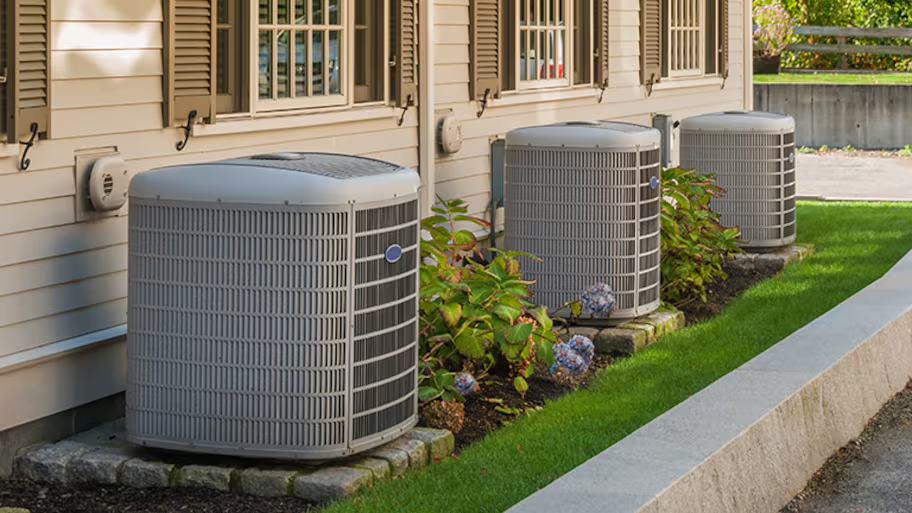
What you’ll pay in Columbus, OH, for furnace repairs depends on many factors. Here’s a breakdown of what can go wrong and the cost to fix those issues.
Consistently changing your furnace filter can improve the air quality in your home


Your furnace air filters perform a crucial job, particularly during the winter months. They trap and capture airborne pollutants, allowing you to both literally and figuratively rest easy.
Experts agree that you should change out a furnace or HVAC unit’s filter every one to three months, depending on the season. An even simpler rule of thumb? If the filter looks dirty, replace it. Fortunately, the furnace filter replacement process is fairly simple, taking no longer than five minutes or so.
So why is keeping on top of your furnace filters so important? Here are six reasons why you should be vigilant when it comes to changing out air filters.
The primary purpose of any air filter is to, well, filter air. Furnace and HVAC filters are especially adept at capturing and trapping airborne pollutants, such as allergens, pet dander, dust, smog, and even mold spores. If an air filter gets dirty and clogged, not only will it become completely ineffective at trapping nasty air particles, but it could actually work to worsen the overall air quality in your home. Why? The pre-existing pollutants will have nowhere to go and could eventually dislodge from the filter.
If you are particularly concerned about your home’s air quality, be sure to choose the right air filter for your furnace system. When shopping, look at the MERV (minimum efficiency reporting value) number, which ranges from 1 to 12. The higher the number, the better the filtration is.
HVAC units and furnace systems are extremely expensive, costing $5,500 on average. Make sure you squeeze the most time out of your system by regularly replacing the air filter.
As a matter of fact, a dirty filter is the most common cause of heating and air conditioning system breakdowns. Air can’t pass through when dirt builds up on the filter, and the system could even overheat. Your motor will also have to work harder, leading to repairs or, even worse, needing a brand-new system.
In addition to learning how to install a furnace filter, you can also extend the life of your furnace by opting for an annual inspection.

Getting that energy bill every month is certainly not fun. However, you can make it less of an ordeal by replacing your furnace’s air filters according to expert recommendations.
When an air filter is clogged, your system uses more energy, driving your bill up. The average household spends about $2,200 a year on energy bills, according to The Department of Energy. By changing your furnace air filter regularly, you can save anywhere from 5 to 15% on your utility costs.
Though rare, a clogged furnace filter can lead to serious consequences. Dirty filters force the motor or heating apparatus to work harder, which can eventually lead the entire system to overheat. Dirty filters can also cause something called short-cycling, which causes your furnace to turn off prematurely. That is no fun during the winter.
Finally, an overtaxed and clogged heating unit can start a fire. This happens when a dirty air filter is sucked back into the system, compromising airflow and starting a dangerous fire at the furnace level. This costly event will require a call to your local furnace repair pro.
The primary reason you have a furnace is to keep your home nice and toasty during the winter. A dirty and clogged filter can prevent the heating system from working at maximum efficiency. A used filter creates strain on the whole system, so less heat travels throughout your home. If you want to cut down on the shivering from December until April, make sure your filters are clean and that your furnace has been maintained.
By the way, the same goes for air conditioning. Replace the filters to help regulate the temperature during those balmy summer months.
If air isn’t constantly moving, it will stagnate, allowing odor-causing particles, dust, moisture, and more to fall onto surfaces. A furnace sends warm air through your ducts at regular intervals, which helps increase the overall airflow.
If the furnace’s filter becomes clogged, less air circulates, and you could find your surfaces to be dirtier than normal. If your home is prone to moisture, stagnate air can encourage mold and mildew growth, even during the winter months.
Every furnace manufacturer has its own recommendation for when to change the furnace filter, so you can start by checking the packaging to find out how you can replace it and when it’s recommended you change it. But you can also look for other signs, especially if you no longer have the manufacturer's information. Signs your furnace filter needs changing include:
The filter becomes discolored, such as dingy yellow or gray color.
You physically see the buildup of dirt and dust.
You’re dusting in your home more often.
Your HVAC cycles run longer than normal, or you experience other common furnace problems.
You can’t recall the last time the filter was replaced.
From average costs to expert advice, get all the answers you need to get your job done.

What you’ll pay in Columbus, OH, for furnace repairs depends on many factors. Here’s a breakdown of what can go wrong and the cost to fix those issues.

HVAC replacement costs depend on a lot of factors, like unit type, size, and labor. See what you can expect to pay for HVAC replacement here.

The average boiler installation cost depends on size, system type, and other factors. Keep reading to learn the cost of a new boiler.

Discover the average wall heater installation cost, key price factors, and expert tips to help you budget and save on your next home heating project.

Prepping your furnace can extend the life of your unit and stop costly repairs. Follow these furnace maintenance tips for a warm, stress-free winter.

You’ll need to get creative if you want to run your portable AC in a windowless room. Here’s how to vent a portable air conditioner without a window.